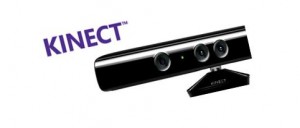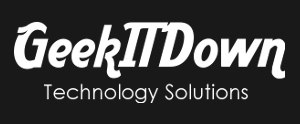 It looks like Microsoft is getting the stars aligned in what could be a complete reinvention of the Windows Operating System. It’s presumed that Windows 8 will be released later this year and with it the new Metro style interface that we, and others, have been discussing over the past several months. The latest move to make Windows 8 a desirable product is the announcement by Microsoft that Kinect will be available for the PC in early 2012.
It looks like Microsoft is getting the stars aligned in what could be a complete reinvention of the Windows Operating System. It’s presumed that Windows 8 will be released later this year and with it the new Metro style interface that we, and others, have been discussing over the past several months. The latest move to make Windows 8 a desirable product is the announcement by Microsoft that Kinect will be available for the PC in early 2012.
An early 2012 release of Kinect for PC indicates to us that Microsoft wants to ‘put the feelers out’ and root out any kinks, glitches or shortcomings before the big Windows 8 launch. By releasing Kinect before Windows 8, Microsoft is ensuring it has a functional, well tested product worthy of marketing with Windows 8.
The benefits of Kinect have been apparent with the Xbox for some time now and recent updates to the Xbox interface have attempted to take further advantage of the device’s capabilities. When the Xbox interface received a facelift, Metro styling and voice control were added. The Metro styling gives a glimpse as to what Windows 8 may look and feel like, while the added motion control is surely a small testbed for what Microsoft plans in terms of motion control for the PC.
The Kinect for PC hardware will have some modifications compared to the existing device. For starters, the depth camera will have updated firmware for viewing objects as close as 20 inches. Additionally, the USB cable will be shortened and Windows commercial program support will be available.
The most exciting part of this announcement are the possibilities it holds for Windows 8. Whether or not you like the Metro look of Windows 8, there’s no denying that a fully functional Metro styled interface with motion control could be the next giant leap forward for PCs. Even if it’s not perfect at launch, the continued progression towards voice comprehension within the Kinect device along with overall hardware improvements, make the imagination run wild.
Envision a PC connected to a large display, possibly mounted on a wall, operated by Windows 8 Metro styled large blocks and app launchers, working in conjunction with motion and voice controlled Kinect. Now envision writing a blog post, preparing a speech or composing a school paper. With the above parameters a user could sit on the couch, bed or wherever, launch MS Word with a motion or two, then dictate an article aloud without the use of a keyboard or mouse. Eventually even using a bluetooth headset or earpiece to dictate the information so that voice input can be kept at a low volume. In a perfect setup a keyboard and mouse would no longer be needed.
While all that may sound perfect, it’s still a distant dream. The voice recognition alone is a hurdle that no one has been able to overcome yet. Even Apple’s Siri lacks the precision needed to perform flawlessly in a voice only environment. Having said that, the other parts are lining up nicely. Microsoft appears extremely focused and organized with their product advancement and launches which is great news for a company that seemed unable to inspire users in recent years.
If you enjoyed or found this article useful, please show us some support by liking us on Facebook or by sharing us on your favorite social website. Thanks!

